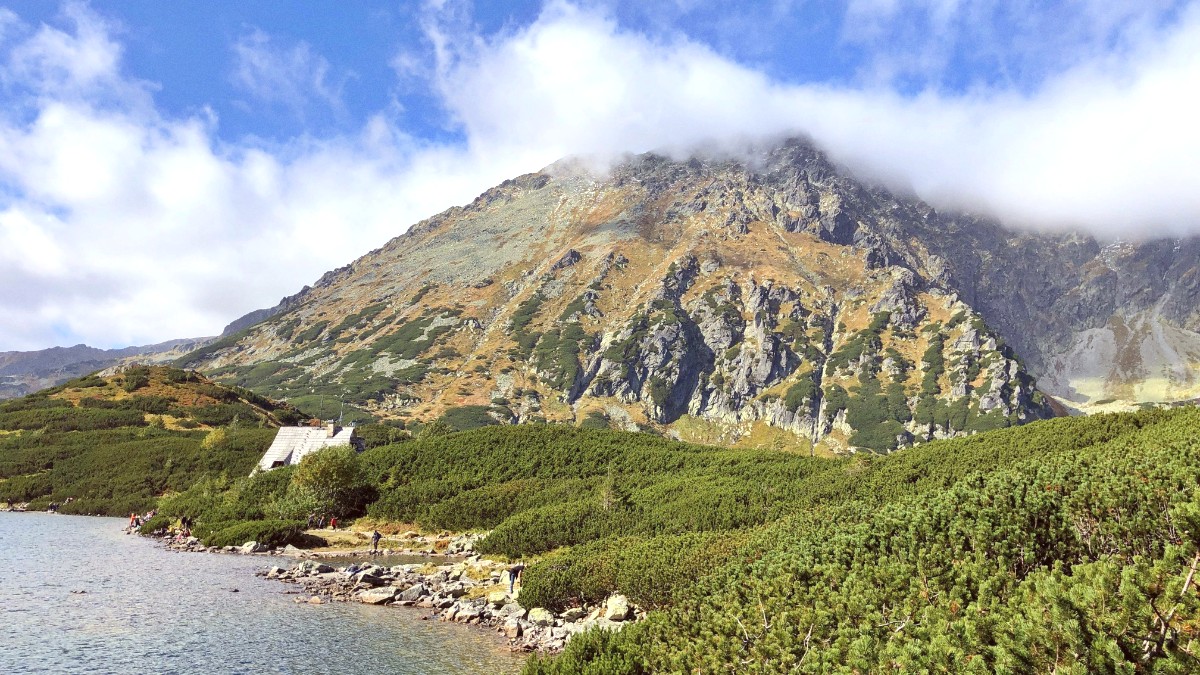
Malopolska, Poland
Tatra cuisine is robust, crafted to sustain communities living in a challenging mountain environment. Historically, people relied on animal husbandry, foraging, and limited agriculture.
This led to a diet rich in dairy products (especially sheep cheese), potatoes, cabbage, mushrooms, and various meats. Highlander culture deeply influences culinary traditions.
A 10% tip is standard for good service in restaurants.
Waiters bring the menu. Call them over when ready to place your order.
Request the bill (rachunek) when ready to pay. "Smacznego!" (Enjoy your meal!) is a common phrase.
Traditional smoked sheep's milk cheese, often grilled and served with cranberry jam. Locate it at street stalls on Krupówki.
A sweet and savory delight.
Hearty, sour Highlander sauerkraut soup. It often features smoked ribs, potatoes, and sometimes lamb or pork.
A warming and substantial meal.
Crispy potato pancakes presented with a rich, savory meat goulash. A filling and satisfying dish.
Comfort food after a day outdoors.
Popular Polish lagers like Żywiec and Tyskie are widely available. The craft beer scene also exhibits expansion.
Popular during cold winter months, this spiced, warm wine offers comfort and warmth.
Some upscale restaurants present elevated traditional cuisine in refined settings. They focus on high-quality ingredients and elegant presentation.
Numerous establishments deliver good quality food at reasonable prices. Many are styled as "karczma" (inn or tavern).
For quick bites, Zakopane presents several affordable options.
Outdoor stalls mainly market oscypek, regional cheeses, and other local products. This is a place to sample and acquire local delicacies.
Discover regional flavors.
Seek out local bakeries for fresh bread and pastries. Supermarkets (Biedronka, Lidl) allow purchasing groceries for self-catering.
Bake or cook your own meals.
Several options for classic Italian flavors.
Quick and familiar meals for convenience.
A few Chinese or Vietnamese eateries are present.
Alternatives for different culinary preferences.
Awareness of gluten-free (bez glutenu) and other allergens progresses in Poland, notably in newer establishments.
Cross-contamination risks should be noted in smaller kitchens.
Carrying a Translation card detailing specific allergies in Polish clarifies communication with restaurant staff.
Some restaurants adapt dishes upon request.
Utilize the Google Translate app or similar tools to communicate requirements effectively.
Apps like HappyCow assist in locating vegan/vegetarian-friendly spots.
Some local guesthouses or specialized operators present hands-on experience in preparing traditional dishes like pierogi or oscypek.
Formal food tours focused solely on Zakopane's culinary scene are limited.
Inquire with the local tourism office or larger hotels for availability of culinary experiences.
During summer and early autumn, these often feature regional food stalls and tasting opportunities.
Cooking demonstrations are sometimes available.
Held in August, this festival often includes a strong culinary component, demonstrating traditional dishes.
Check local event calendars for specific dates.
Many "Karczmas" (traditional inns) host Highlander evenings. These often include a multi-course traditional meal alongside live folk music by a Kapela Góralska (Highlander band).
For true wilderness dining, some adapted Bacówki (shepherd huts) offer simple, rustic overnight accommodation and meals for hikers.
Explore emerging craft beer scene in and around Zakopane.
Taste local honey and seasonal forest berries, often found at markets.
Sample homemade fruit or herbal liqueurs (Nalewka) at various restaurants.